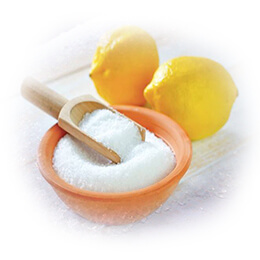ANTIOXIDANTS

1- Ascorbic Acid (Vitamin C) PRODUCT CODE: E-300
Explanation: Ascorbic Acid is a monosaccharide derivative and structurally similar to glucose and other six-carbon monosaccharides. They are colorless, white, rectangular crystals. It has a very mild specific odor. It has a sour taste and an acid reaction. It is optically active. Turns polarized light right. Ascorbic acid; It is a white or slightly yellow, odorless crystalline substance that is completely soluble in water, but hardly soluble in acetone. Insoluble in ether, petroleum ether, benzene, chloroform and oils.
Vitamin C is chemically the enantiomer of Ascorbic Acid that turns light to the left. Commercial Vitamin C is generally composed of Ascorbic Acid crystals or calcium or sodium salts of Ascorbic Acid. The traditional production of Ascorbic Acid is achieved by biotransforming sorbitol with the Reichstein process, which is a seven-step chemical process, while the use of ketogulanic acid, which is an important component in this process, has made significant progress by reducing production costs with the newly developed fermentation technology.
Usage areas : Ascorbic Acid is widely used in the food industry as an antioxidant due to its ability to hold oxygen. It is used to store oils and fatty foods for a long time and to prevent the browning of white colored vegetables and fruits. It prevents oxidative browning in fruits and vegetables, rancidity in meat and seafood, and undesired odor development in milk. In addition, frozen fruits lose their natural color and smell during melting. These drawbacks can be prevented by adding pure Ascorbic Acid to them before freezing. Oxygen is held up by Ascorbic Acid before making any unpleasant changes. In this way, Ascorbic Acid has been used as an antioxidant for 25 years in fruits such as frozen apricots, peaches, apples, grapes, bananas, pears and pineapples. In addition, Ascorbic Acid is used to enrich foods and beverages with vitamins.
